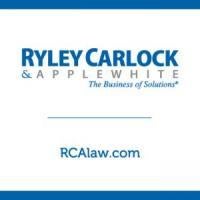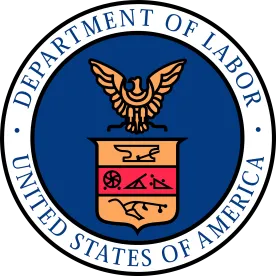The recently passed Families First Coronavirus Response Act (FFCRA or Act) requires certain employers to provide employees with paid sick leave and expanded family and medical leave for specified reasons related to COVID-19. On April 1, 2020, the U.S. Department of Labor (“DOL”) provided further guidance for employers subject to the FFCRA with new temporary regulations. The regulations provided much-needed clarity concerning the emergency paid sick leave and expanded FMLA leave provisions of the FFCRA.
Under the FFCRA, employees are eligible to take two weeks of paid leave if they: (1) are subject to a Federal, State, or local quarantine or isolation order related to COVID-19; (2) have been advised by a health care provider to self-quarantine for reasons related to COVID-19; (3) are experiencing COVID-19 symptoms and are seeking a medical diagnosis; (4) are caring for an individual subject to a quarantine or isolation order as described in item 1, or self-quarantine as described in item 2; (5) are caring for his or her child whose school or place of care is closed or unavailable due to COVID-19 reasons; or (6) are experiencing any other substantially-similar condition specified by the U.S. Department of Health and Human Services. Some employees are also eligible to get a further ten weeks of paid FMLA leave to care for a child whose school or place of care is closed or unavailable due to COVID-19 reasons.
Who does the Act apply to?
In general, private sector employers with fewer than 500 employees must provide FFCRA leave to employees for qualified COVID-19 related reasons. To determine whether an employer is under the 500 employee threshold, the employer should count all full-time and part-time employees, employees on leave, temporary employees who are jointly employed by the employer and another employer, and individuals provided through a temporary placement agency. Independent contractors and employees who have been furloughed or laid off do not count towards the 500-employee threshold. This count should be conducted at the time leave is requested.
Can employees receive paid sick leave if they are under self-quarantine?
In order for an employee to receive paid sick leave because of self-quarantine, the employee must be unable to telework or work at the normal place of business. Additionally, any self-quarantine recommendation must be based on a professional health care provider’s conclusion that the employee has COVID-19, may have COVID-19, or is especially vulnerable to COVID-19. An employee experiencing COVID-19 symptoms may take paid sick leave for time spent making, waiting for, or attending an appointment for COVID-19 testing, but must be affirmatively seeking a diagnosis in order to qualify for the paid sick leave. While an employee who cannot telework may continue to take paid sick leave while awaiting a test result, an employee who is able to telework while waiting for test results may not take paid sick leave, absent extenuating circumstances such as extreme COVID-19 symptoms.
What if an employee has to care for another individual?
Under the new regulations, an employee is not eligible for paid sick leave to care for an individual with whom the employee has no personal relationship. However, an employee is eligible for paid sick leave if they are caring for an individual who is an immediate family member, roommate, or similar person with whom the employee has a relationship that creates an expectation that the employee would care for the person if he or she was quarantined or self-quarantined. Likewise, the employer must have work available, and the employee cannot be able to telework while caring for the individual.
Regarding childcare, an employee is only eligible for paid sick leave to care for his or her own child, including stepchild. Employees must also certify that no other "suitable" caretaker -- including co-parent, co-guardian, or usual child care provider -- is available to care for the employee's child needs. Employees requesting sick leave to care for a child may also be entitled to an additional ten weeks of paid FMLA leave, so long as they were employed for at least 30 days prior to requesting leave.
Which employees are able to “telework”?
Employees are only eligible for paid leave under the FFCRA if they are unable to work at their normal place of business, or telework. “Telework” is defined as work the employer permits or allows an employee to perform while the employee is at home or at a location other than the employee’s normal place of business. An employee is able to telework if: (a) his or her employer has work for the employee; (b) the employer permits the employee to work from the employee’s location; and (c) there are no extenuating circumstances (such as serious COVID-19 symptoms) that prevent the employee from performing that work.
Many states, including Arizona, have issued “stay at home” or “shelter in place” orders. While such orders constitute quarantine or isolation orders, an employee is only eligible for paid sick leave if being subject to such order prohibits the employee from working (either at the regular worksite or teleworking). An employee subject to one of these orders may not take paid sick leave where the employer does not have work for the employee. In such cases, the employee may be eligible for enhanced unemployment compensation.
How much should employees get paid?
Depending on the reasons for the FFCRA leave, not every employee will get paid the same amount. If the employees are requesting the leave because of a government quarantine or isolation order, because they have been instructed to self-quarantine by a health care provider, or because they are experiencing COVID-19 symptoms and seeking a diagnosis, then employees should be paid 100% of their regular rate of pay up to $511/day, or $5,110 in the aggregate.
But if the employees are seeking paid sick leave for any other reason, they are only entitled to two-thirds of their regular pay, up to $200/day, or $2,000 in the aggregate for the two weeks of paid sick leave. No employee is eligible for more than 80 hours of paid sick leave, even if an employee regularly works more than 80 hours of work in a two-week period. Employees who take the expanded and paid FMLA leave are eligible for up to an additional ten weeks at two-thirds of their regular pay, capped at $200/day, or $10,000 in the aggregate for the FMLA portion of the leave.
Does the federal government cover the expense of paid sick leave and paid FMLA leave?
Each quarter, private sector employers subject to the Act are entitled to a fully refundable tax credit equal to 100% of the qualified sick leave and expanded FMLA wages paid by the employer, subject to the aforementioned limits. The tax credit is applied against employer Social Security taxes, but employers are reimbursed if their costs for qualified sick leave exceed the taxes they would owe. Moreover, the amount of the tax credit is further increased by the amount of the expenses of the employer’s healthcare plan allocable to the qualified sick leave or expanded FMLA leave. This allows the employer to seek reimbursement for the cost of continuing to provide health insurance while the employee is away. In other words, coronavirus-related paid sick leave or FMLA leave will be a net-zero cost for employers so long as the leave is for a qualified reason, with the appropriate documentation, and in line with applicable laws and regulations.
Should employers require documentation prior to approving FFCRA-related leave?
Employers are required to retain all documentation of FFCRA paid leave requests for four years, regardless of whether or not leave is granted. Employers should create and retain documents that support claims for tax credits including: (1) how the employer determined amount of leave paid to employees; (2) how the employer determined amount of qualified health plan expenses allocated to the leave; (3) copies of completed IRS Form 7200; (4) copies of completed IRS Forms 941; and (5) other documents needed to support its request for tax credits.
But, an employer may only ask for: the employee’s name, the dates leave is requested, the qualifying reason for the leave, a statement that the employee is unable to work or telework, and, as applicable, the name of the government entity that issued the quarantine or isolation order, the name of the healthcare provider who advised the employee to quarantine, and the name of the child being cared for, and their school/care provider that has closed or become unavailable, along with a representation that no other suitable person is able to care for the son or daughter.
Are there any immediate actions employers need to take?
The most recent regulations require that employers post on their premises, in conspicuous locations, the FFCRA’s provisions and the steps to file a complaint. The DOL has stated that its model notice, a poster entitled “Employee Rights,” is sufficient notice – provided it is posted in the workplace in conspicuous places, emails, or on the employer’s website.
How does this affect small businesses?
Perhaps no group has been hit harder by COVID-19 than small businesses. In an effort to mitigate further damage, small businesses are exempt from approving paid sick leave, if adhering to the requirement would jeopardize the viability of a business, so long as the employee is requesting sick leave for child-care related reasons.
Should a small business deny FFCRA leave, the employer should create and retain documentation supporting their denial. To use the exemption, an employer must show that (1) allowing the leave would cause the business to cease operating at minimal capacity; (2) the absence of the employee would entail a substantial risk to the business; or (3) that the employer would be unable to find a capable substitute worker to enable operations to continue in a minimal capacity.
Conclusion
The abundance of new regulations can be both overwhelming and confusing. The temporary rules discussed offer clarity to the expansive recent provisions, but more questions are likely to arise.






 />i
/>i

